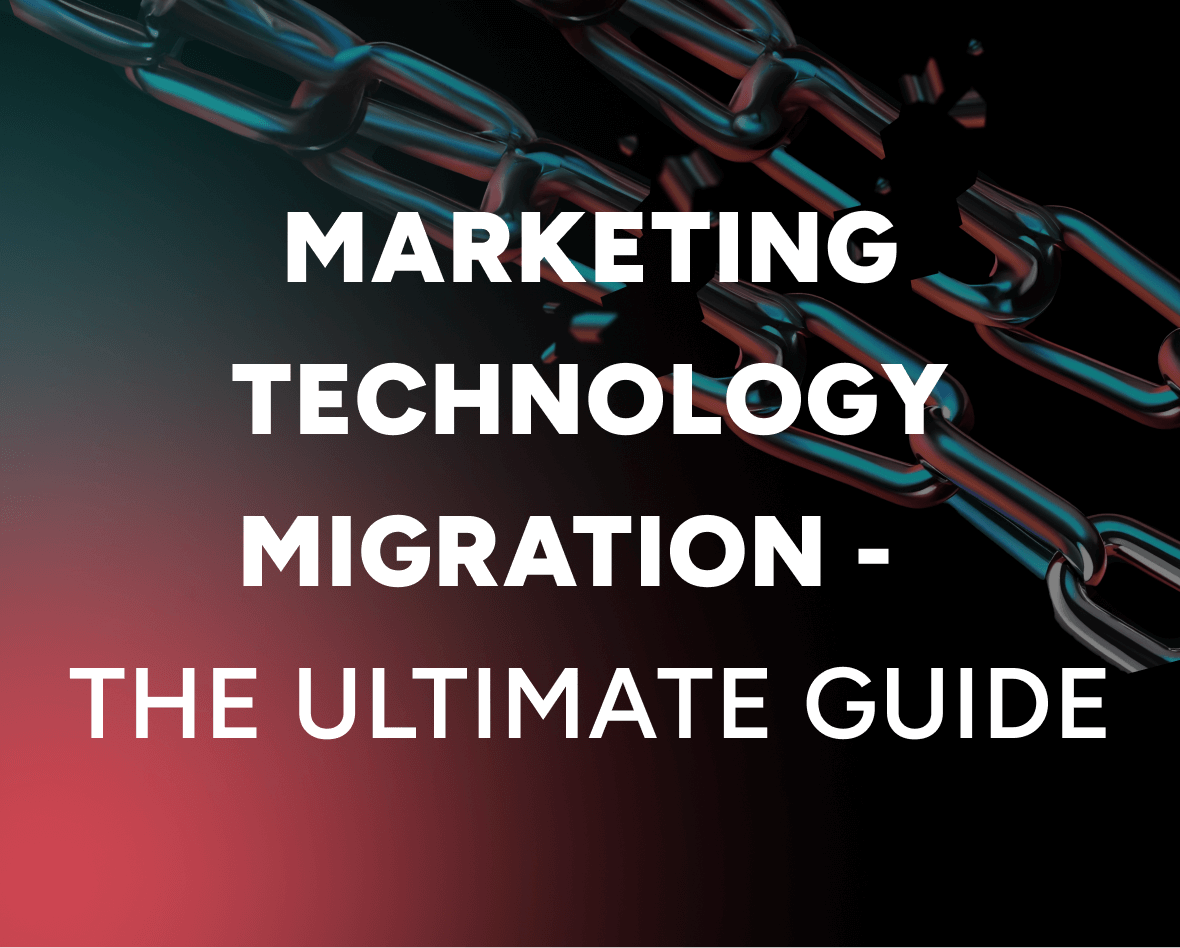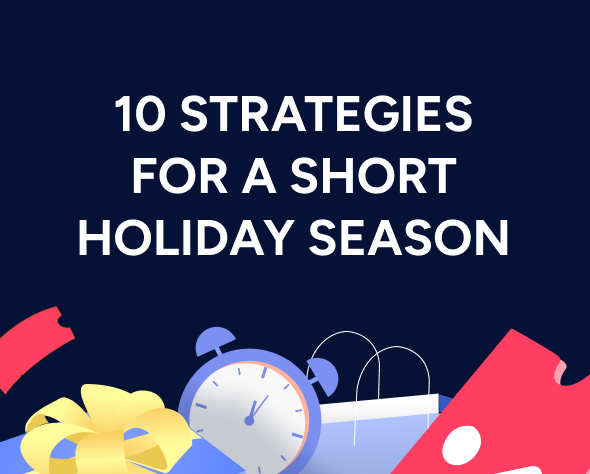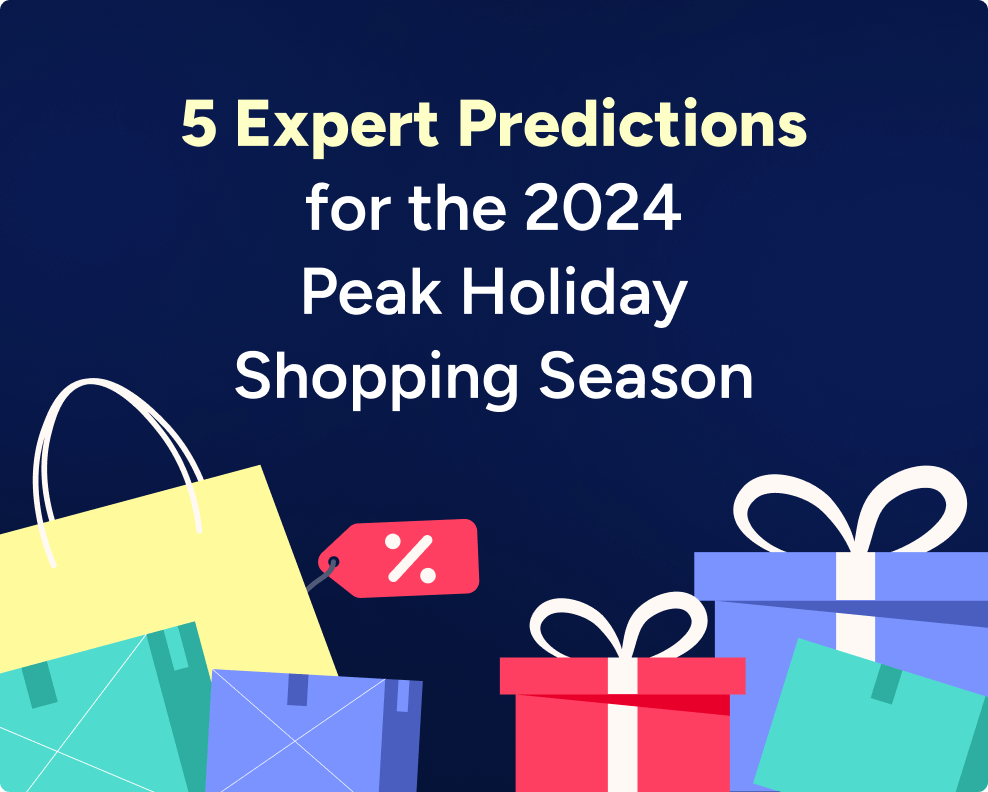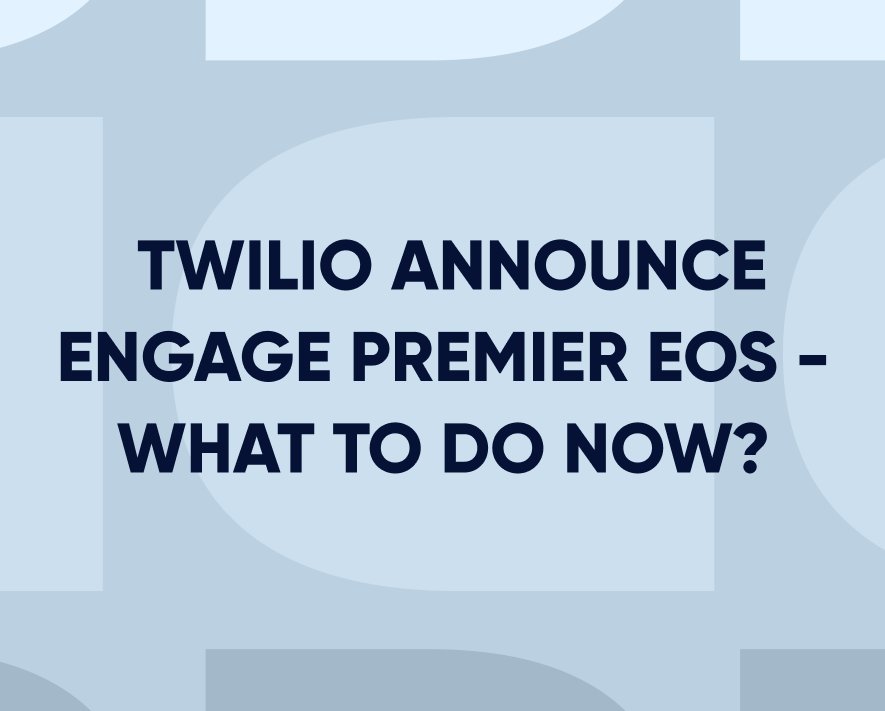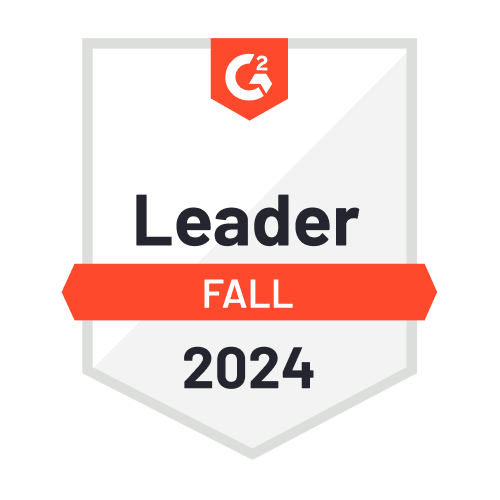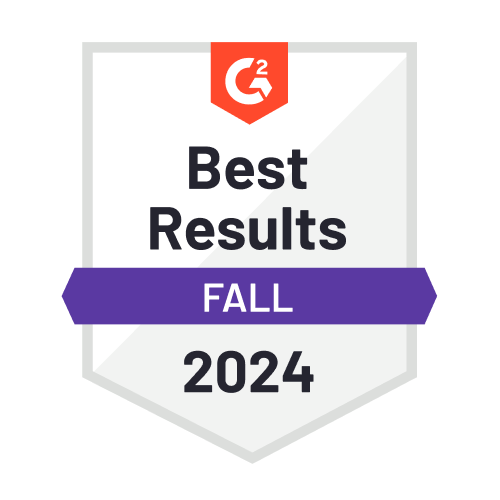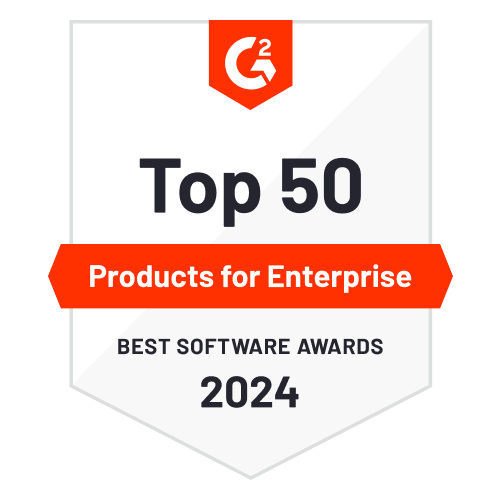Lifecycle marketing: Definition, best practices, and examples
The goal of lifecycle marketing is to foster customer loyalty and create profitable long-term relationships with your customer base. This includes a whole range of tactics and strategies during different lifecycle stages, like:
- Speeding up customer acquisition with better online ads and more targeted landing page pop-ups.
- Educating potential customers with relevant content marketing and pushing them to their first purchase via different incentives.
- Turning one-time buyers into loyal customers (and hopefully brand ambassadors) by continuously meeting their needs and preferences.
Updated on 15 Aug 2024
The key to successful lifecycle marketing is that these activities must be personalized to each customer and create a consistent experience across channels and at scale. This guide will help you do exactly that by covering the following topics:
- What lifecycle marketing is and its benefits.
- The foundation of successful lifecycle marketing.
- How to get started and scale your lifecycle marketing strategy.
We’ll also use Insider — our enterprise cross-channel personalization platform — to show how you can lay the foundation for successful lifecycle marketing and scale your efforts across channels.
Insider can help you connect data across channels, predict future behavior with AI, and automate cross-channel journeys during every stage of the customer lifecycle. Try our platform or book a free demo with our team.
Lifecycle marketing 101: What it is, stages, and benefits
Lifecycle marketing is the strategic process of engaging and nurturing customers using a personalized approach during their entire journey with your brand. Its goal is to foster meaningful customer relationships, which in turn result in higher retention and customer lifetime value (CLTV).
A comprehensive lifecycle marketing strategy covers all stages of the customer lifecycle — from awareness and acquisition to onboarding, engagement, retention, and advocacy.

It also relies on brands having reliable and constantly updated data to understand current and potential customers’ needs, interests, and preferences. This enables marketers to deliver tailored content, messaging, and product recommendations at every stage of the customer lifecycle.
Successful customer lifecycle marketing leads to a few key benefits:
- Improved customer retention and CLTV: People are much more likely to become long-term loyal customers (and less likely to churn) when every stage of their journeys is tailored to them.
- Better marketing ROI: Targeted marketing efforts ensure resources are allocated more efficiently. Retaining customers also helps improve your ROI, as it’s way cheaper and easier than acquiring new ones.
- Increased customer engagement and satisfaction: A good customer lifecycle marketing strategy relies on personalized and timely communications with users on the channels and at the times they prefer. This naturally leads to higher engagement and satisfaction levels.
- Brand advocacy and word-of-mouth marketing: Satisfied customers are more likely to become brand advocates by promoting the brand to their friends, family, and colleagues.
The foundation of successful lifecycle marketing
Lifecycle marketing starts with your customers. You need to find the right audiences for your campaigns and ensure they’re always met with the right offers at the right times and on the right channels.
The only way to do that consistently is by having a clear understanding of customers. In other words, you need reliable customer data.
While many brands have that data, it’s usually siloed off in disconnected solutions — like email marketing platforms, customer relationship management (CRM) software, analytics tools, customer survey platforms, and so on.
There are different ways and technological solutions to getting around this problem. One of the more convenient ones is unifying your data with a customer data platform (CDP) — a type of software specifically designed to aggregate data from multiple sources into a single convenient database.
CDPs can hold and update all the information you need to understand your customers during their entire lifecycle with your brand, including:
- Their names, contact information, locations, and demographics.
- Their interactions with your website, mobile app, and marketing messages.
- Their purchase histories, last browsed and visited products, and items currently in their carts.
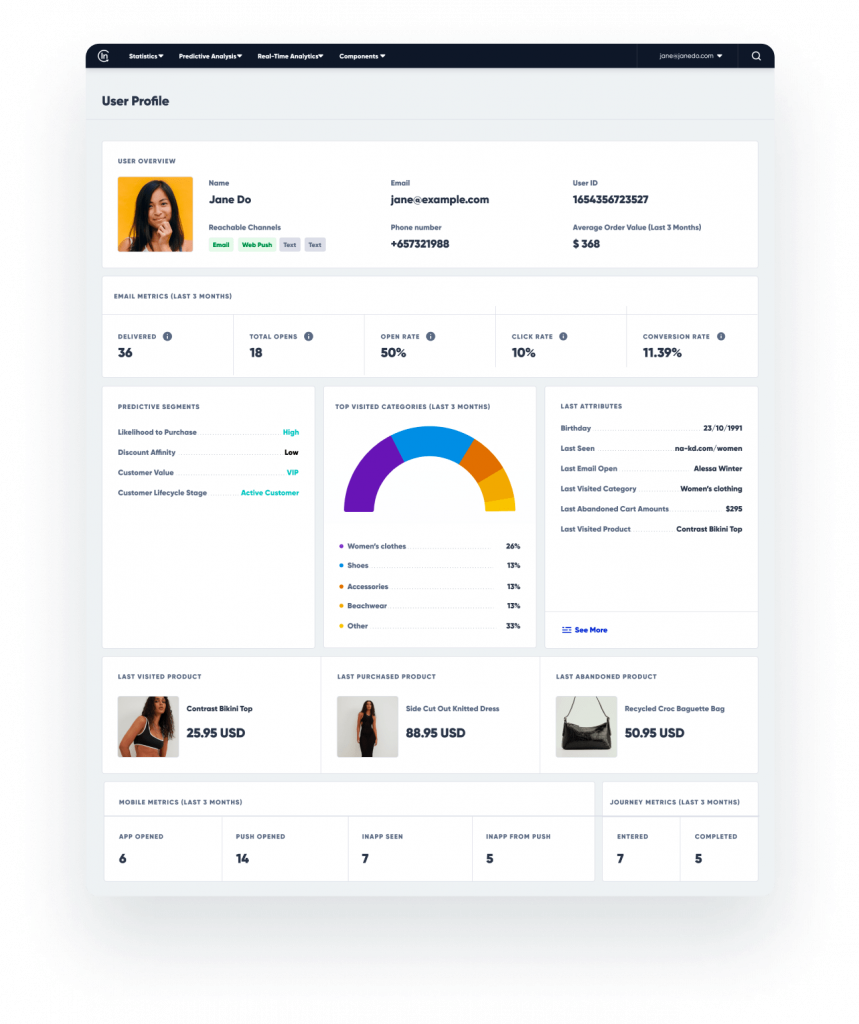
CDPs create 360-degree profiles similar to the one shown above that hold all that data and more. Armed with these insights, marketers can create lifecycle campaigns that are tailored to each customer’s unique needs and preferences in terms of channels, products, engagement times, and more.
There’s also an element of convenience because marketers don’t have to constantly navigate between different systems. Instead, they have all the data they need in one place, which drastically speeds up campaign launches and reduces the reliance on technical teams.
For more details on this topic, check out our article on how CDPs help marketing teams drive growth and efficiency.
How to get started and scale your lifecycle marketing strategy
The sections below will give you a practical framework of how to set up the foundation for successful lifecycle marketing and scale your efforts across channels with Insider.
We’ll start with simpler tactics that can help you generate quick results and get buy-in for future lifecycle marketing investments. Then, we’ll explore more advanced strategies that can be implemented down the line.
You’ll also see real-life examples of companies that increased their revenue, CLTV, and other key metrics using various lifecycle marketing strategies.
Create basic unified customer profiles and segments
As we said, having clear, accurate, and reliable customer data is the foundation for successful lifecycle marketing. That’s why we’ve built an industry-leading enterprise CDP for Insider.
Our CDP can aggregate data from any online or offline source, including CRMs, CMSs, point-of-sale devices, analytics software, survey tools, customer service solutions, and much more.
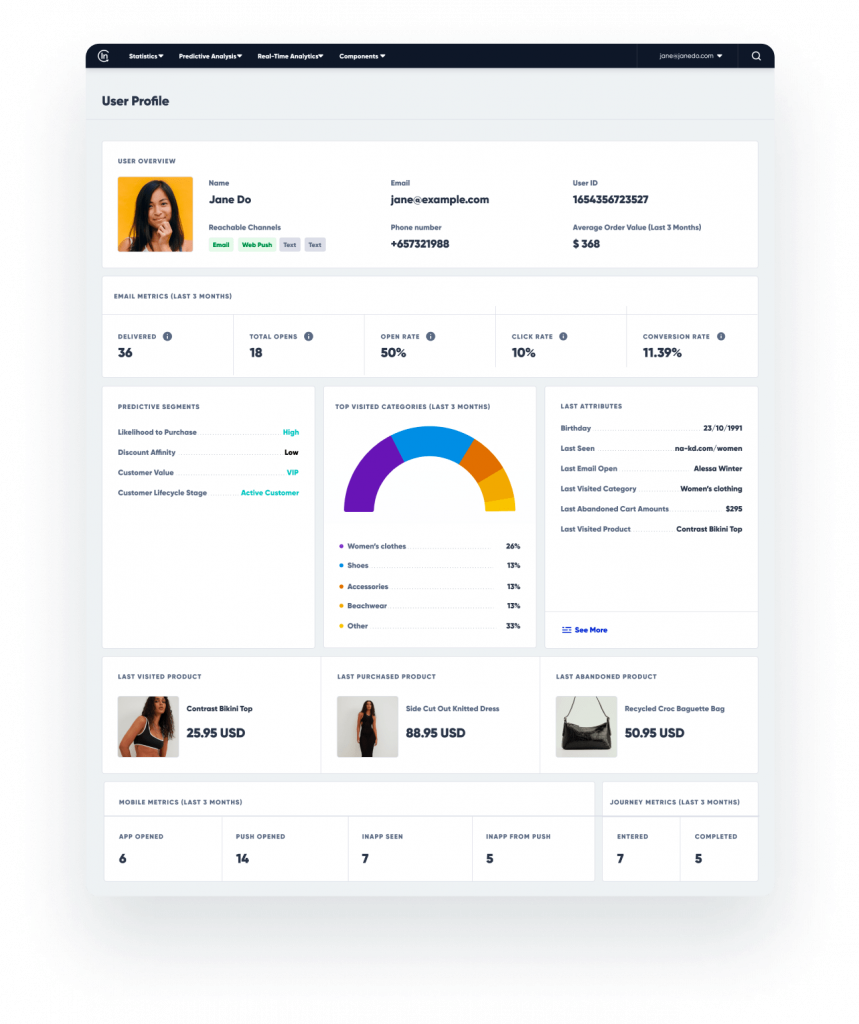
These profiles don’t have to be incredibly detailed right away. You can drastically improve your message relevance, customer engagement, and conversion rates with a few simple data points, like customers’ purchase history, intent to buy, and location.
Plus, once Insider is set up, it automatically tracks behavioral and engagement data (e.g., website interactions, purchases, survey responses, and more) to enrich these profiles in real-time.
This creates a positive snowball effect, where your understanding of existing customers’ needs and preferences gets better over time, enabling you to be more effective with your lifecycle marketing strategies. It also helps you refine your customer personas over time using accurate data.
Segmentation is another big benefit of working with Insider. Our platform automatically creates ready-to-use segments, including:
- Cart and browser abandoners.
- Users who turned into leads via one of your campaigns.
- Users who interacted with your marketing messages on a specific channel.
- And many others shown below.
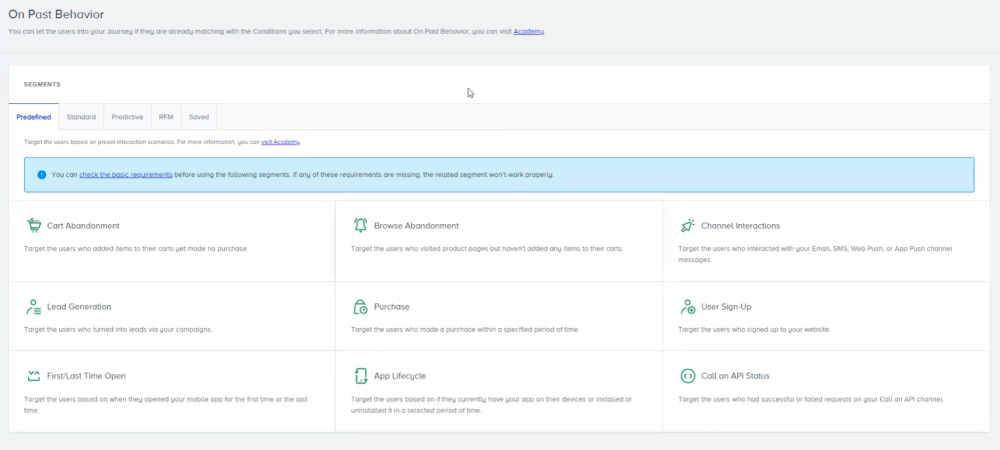
As you can see, these segments can help you target users at different lifecycle stages — from leads to people gearing up to make their first purchase to customers who’ve already bought something from your brand.
You can get even more precise by using standard and predictive characteristics to enrich your segments like:
- Devices, locations, and demographics.
- Likelihood to purchase or engage on a specific channel.
- Discount affinity.
- And more.
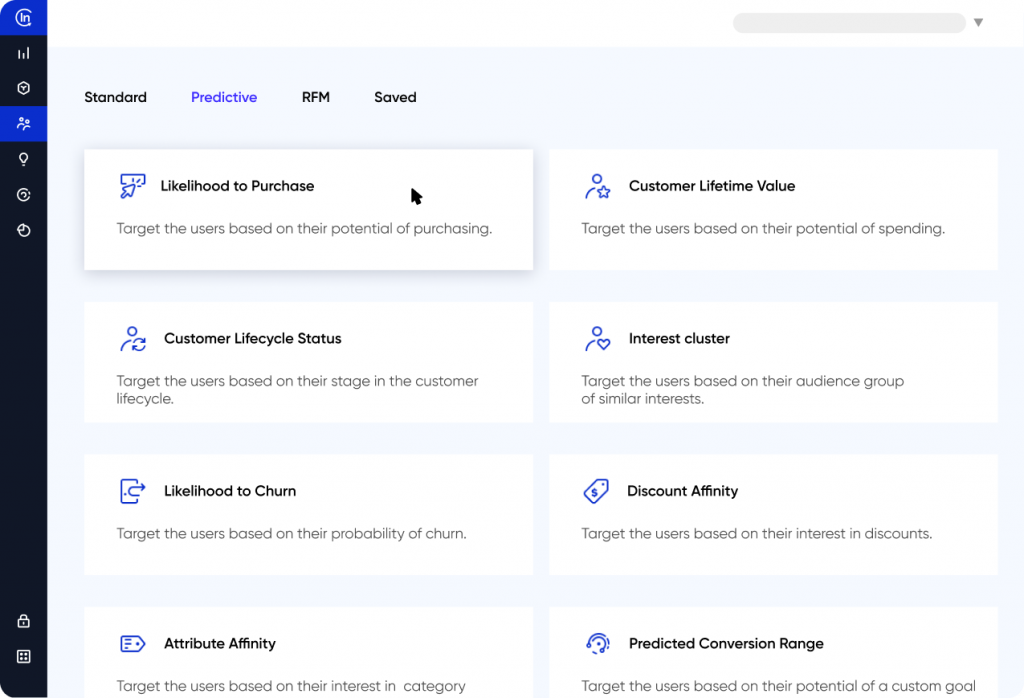
Overall, consolidating your customer data gives you the necessary foundation to understand your target audiences and run successful lifecycle campaigns. It also drastically simplifies marketers workflows’ because it removes the need to constantly jump between and integrate different tools.
For example, Spotlight Retail Group’s marketing teams achieved an 80% reduction in campaign launch time and a 37x ROI thanks to Insider’s CDP and intuitive campaign creation tools.
Start with proven personalization strategies and channels
Once you have basic profiles and segments, you want to start deepening the relationship with your customers by delivering tailored content, messaging, and product recommendations on the touchpoints you know they’re already using.
For most brands, these foundational touchpoints are their website and mobile app, email, and online ads. As a versatile, enterprise-grade platform, Insider lets you access all these (and other) channels from one place. You can also use Insider to personalize your efforts across them and ensure you’re making the most out of our marketing spend.
Here are a few real-life examples:
- Website personalization. Insider lets you tailor every element of your site — including banners, categories, and product recommendations — to each user. This is crucial because people will likely visit your site repeatedly, both as anonymous visitors and paying customers. Adidas used these capabilities to increase their AOV by 259% and their mobile conversion rate by 50.3%.
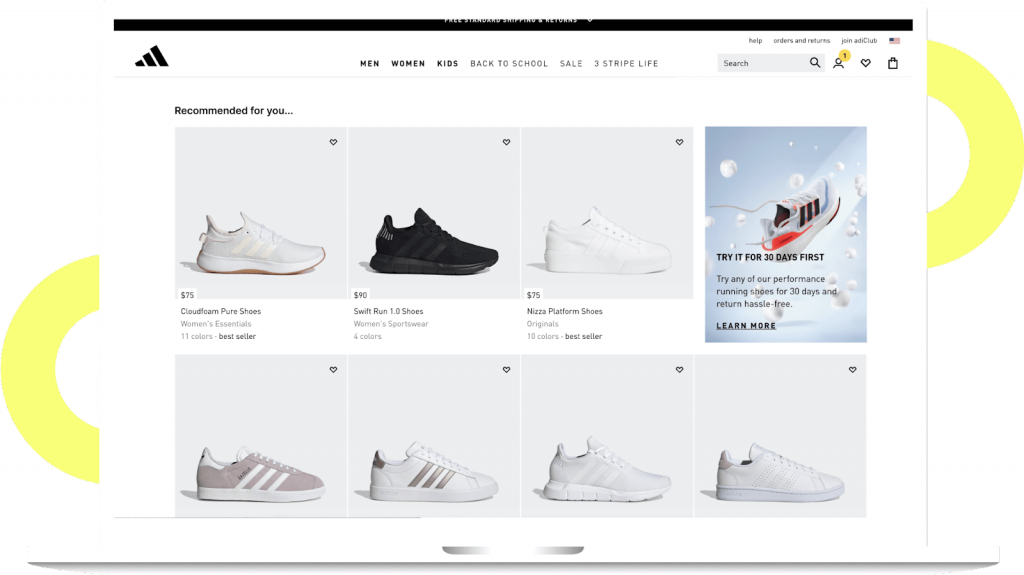
- Email marketing. Email is the most widely used digital marketing channel, so most users will expect you to use it at some point during their lifecycle with your brand. With Insider, you can easily build personalized emails and automated email flows for all sorts of scenarios. For instance, Remix used our email marketing tool to create a tailored journey for new users, resulting in a 104% increase in first purchases.
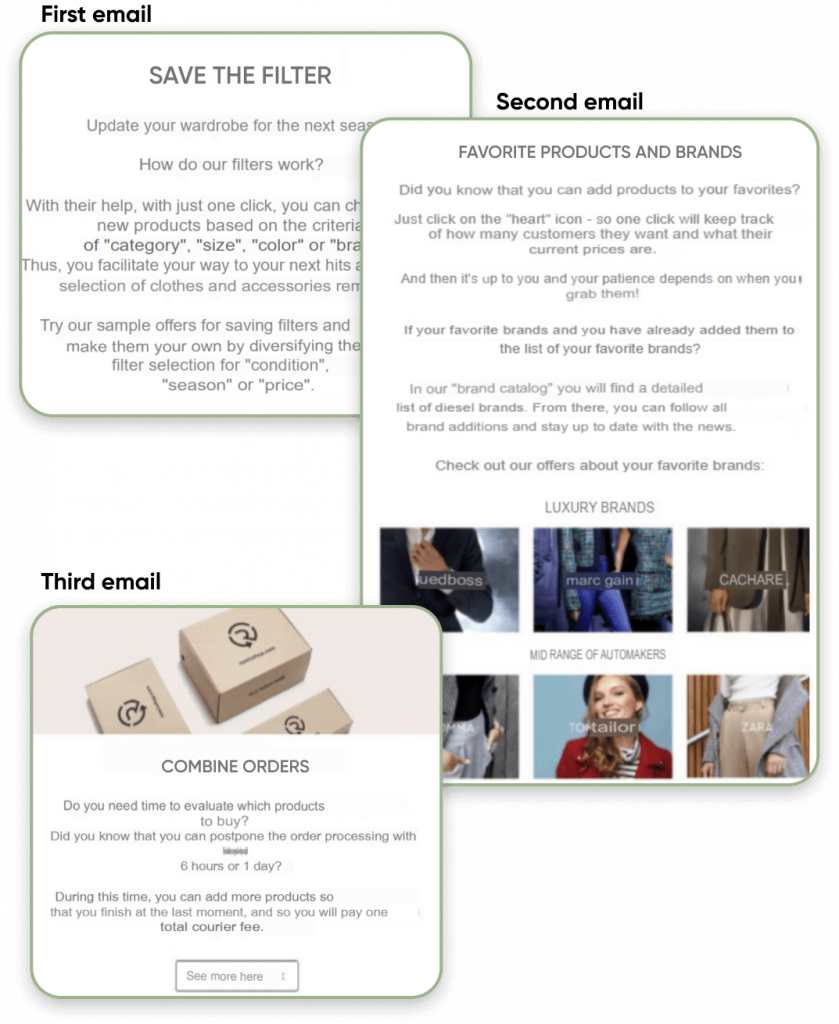
- Online ads. Ads are useful for brand awareness, new sales, re-engagement, and retargeting but they’re also expensive and can eat into your profit margins. That’s why it’s crucial to be as precise as possible with them, which Insider helps you do by exporting segments and targeting them via personalized ads. Pierre Cardin used this strategy to increase their conversions and return on ad spend (ROAS) by 445% and 164.83%, respectively. Pro tip for starters: building a logo using an online logo maker can give your ads a professional touch and help establish brand recognition across your advertising campaigns.
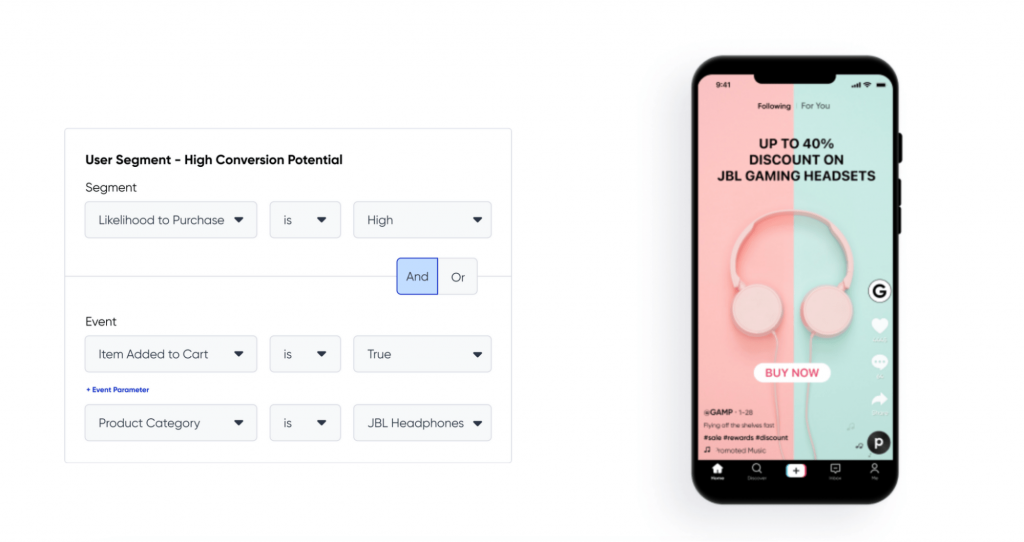
Engage anonymous website visitors
For many businesses, the majority of website traffic is anonymous — meaning visitors haven’t shared any contact information with the brand yet. This creates a challenge from a lifecycle marketing perspective.
Since companies don’t have data about these visitors, marketers can’t personalize their experience or engage them effectively using traditional methods. As a result, they miss out on potential revenue and new customers.
That’s why Insider’s CDP creates unified profiles for anonymous visitors. These profiles contain valuable information, including the visitors’ last browsed products, the categories and price ranges they’re interested in, and much more.
This enables you to personalize their website experience in real-time and send them relevant web push notifications, resulting in higher conversion rates and lower acquisition costs.
For example, Marks & Spencer used Insider’s push notifications to achieve a 15.1% cart recovery rate (compared to the 3% industry average for abandoned cart emails).

Insider also offers other ways to engage anonymous visitors. You can take advantage of cookies personalization by triggering personalized onsite experiences based on contextual data (like device type or page URL) without needing any user information.
For example, you can:
- Create urgency with time-dependent campaigns on your homepage.
- Build confidence in users with testimonial campaigns on product pages.
- Add a “Top Searched Keywords” campaign on your category pages to ensure users get what they’re looking for in one click.
- Deliver product-based recommendations that don’t depend on user data by leveraging algorithms like “Similar Products”, “From the same seller”, and more.
All these strategies don’t require any personal or contact information. This makes them a perfect option for marketers looking to convert first-time visitors into paying customers faster, cheaper, and more efficiently.
Create consistent, personalized, and automated customer journeys
Reaching customers at different touchpoints is only one part of successful cross-channel marketing. In order to maximize the effectiveness of your lifecycle marketing plan, you also need to coordinate your efforts across all of them.
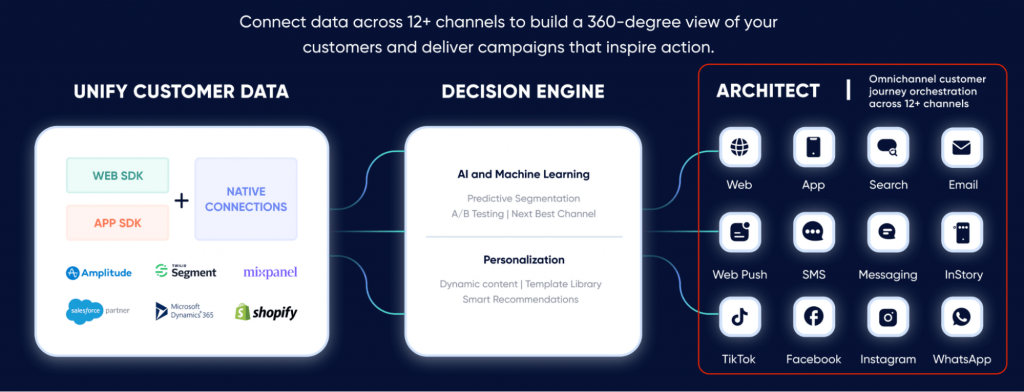
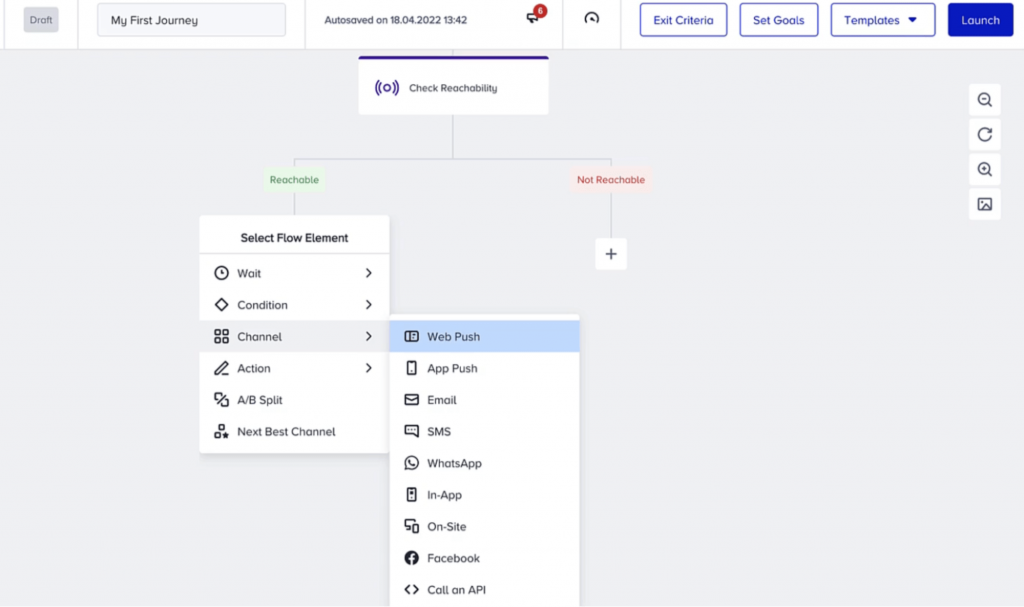
For example, you can use Architect to build:
- Email flows for welcoming new subscribers and guiding them to their first purchase.
- Multi-step cart recovery campaigns across different channels. For instance, you can start on email and follow up via SMS or WhatsApp for customers who don’t respond to the first attempt.
- Automated omnichannel upsell or replenishment campaigns stimulate repeat purchases and are personalized based on customers’ interests, preferred channels, and engagement times.
- And much more.
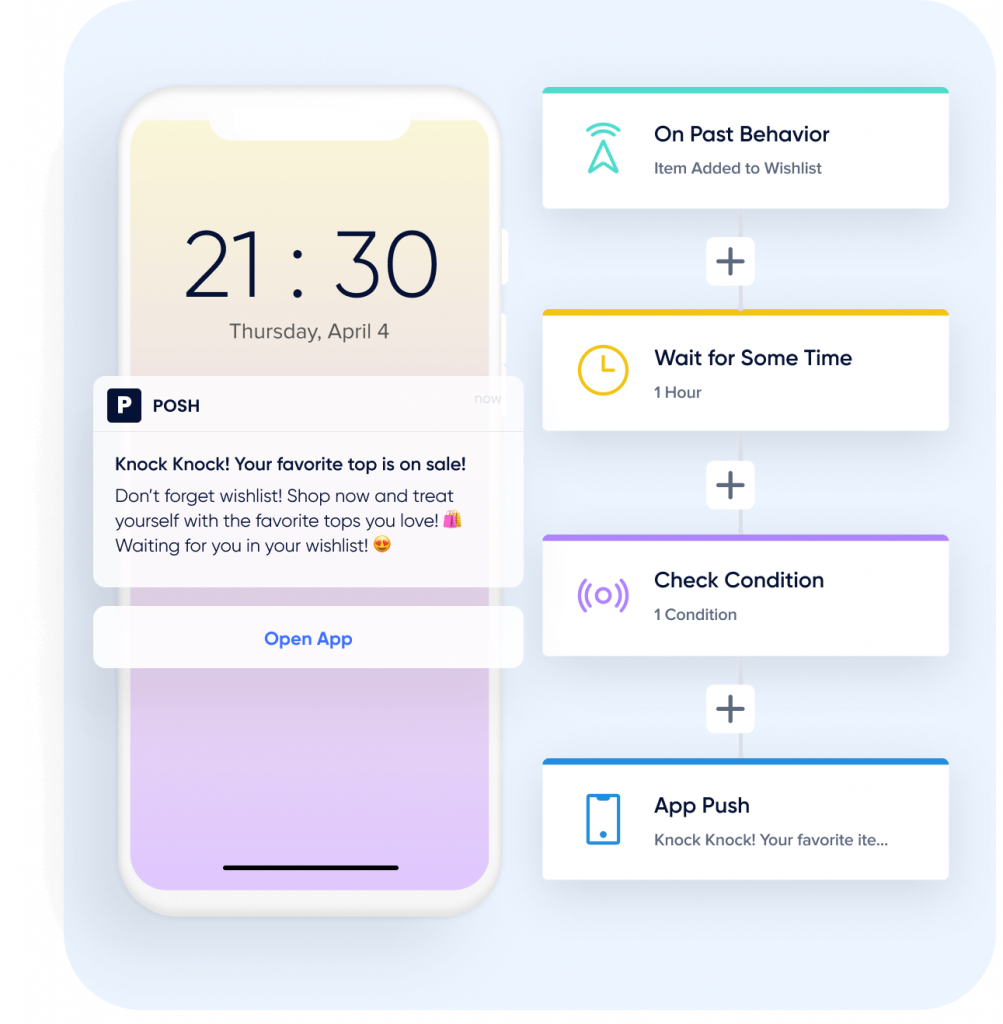
And since all of this is powered by your unified customer data, you can be sure that your campaigns are based on a good understanding of your customers’ needs, preferences, and interests.
Plus, you can analyze the results of each journey right inside Architect or in a separate journey analytics dashboard.
That way, you can see where your lifecycle marketing efforts are succeeding and where there’s room for improvement. This includes key metrics like clicks, conversions, revenue, AOV, LTV, and more.
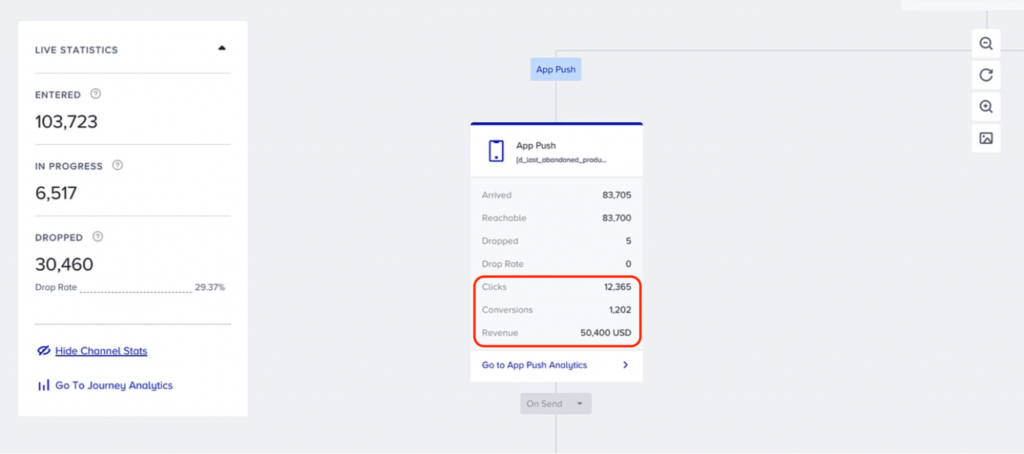
For example, beauty and cosmetics brand Clarinsused Insider to consolidate their customer data and deliver personalized cross-channel experiences at different customer lifecycle stages. This resulted in a 45% increase in lead capture, a 4% uplift in conversion rates, and a 30x ROI in 12 weeks of using Insider.
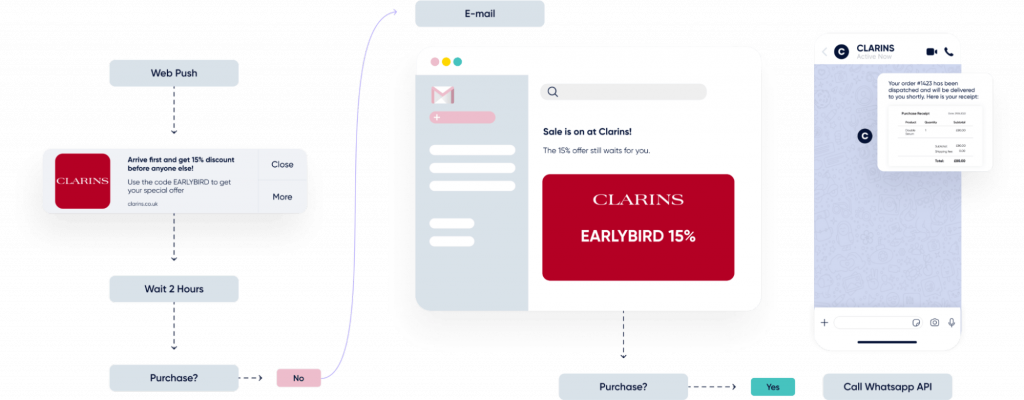
Connect to other data sources and scale your lifecycle marketing across other channels
The steps we covered until this point all had the same goal — to maximize what’s currently working for your brand in terms of channels and personalization strategies.
Once that’s done and you’ve proven the impact of your lifecycle marketing efforts, you should have a much better understanding of your customers and a basis for investing more resources into the process.
At this point, we usually recommend connecting to all other relevant sources, adding more data points to your customer profiles, and cleaning up and organizing your data. This is often a resource-intensive process but it’s essential for taking your lifecycle marketing to the next level.
To make the process easier, we’ve built 100+ integrations for Insider. This means you can easily integrate our platform and ensure it shares data with tons of popular solutions like:
- CDPs like Segment, mParticle, and Tealium.
- Loyalty program software like Voucherify and Yotpo.
- CRMs like Salesforce, Pipedrive, HubSpot, and Oracle Netsuite.
- Ad networks for social media and search like Google and Facebook.
- Analytics and attribution platforms like Mixpanel, Amplitude, and AppsFlyer.
- Marketing automation platforms like Pardot, Keap, and Marketo.
- eCommerce platforms like Shopify and BigCommerce.
- And many other popular cloud-based solutions.
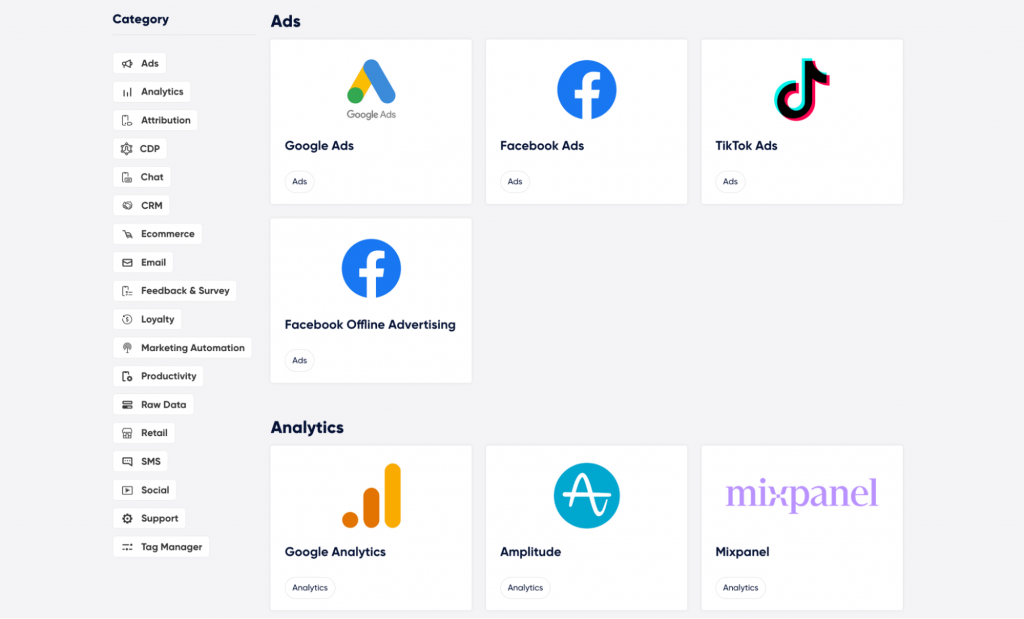
These integrations can enrich your 360-degree customer profiles even more. They also guarantee that crucial data is constantly being shared between the solutions you’re using.
For example, you can integrate Insider with customer service solutions like Intercom and Zendesk. That way, you can have all the data in them — like customers’ survey responses and the issues they’ve shared with your support team — as part of their 360-degree profiles.
Another key step to take is exploring new channels. While website, email, and online ads are the standard for many brands, other unlocking channels can yield outsized gains, especially if your customers are already using them in their day-to-day.
For example, with Insider, you can also reach users via:
- SMS, which typically boasts high open, conversion, and engagement rates. You also have access to tons of SMS templates for different scenarios during the entire customer lifecycle. For example, you have templates for welcoming new customers, sending contextual cart reminders, rewarding VIP customers with sneak peeks of new purchases, and much more.
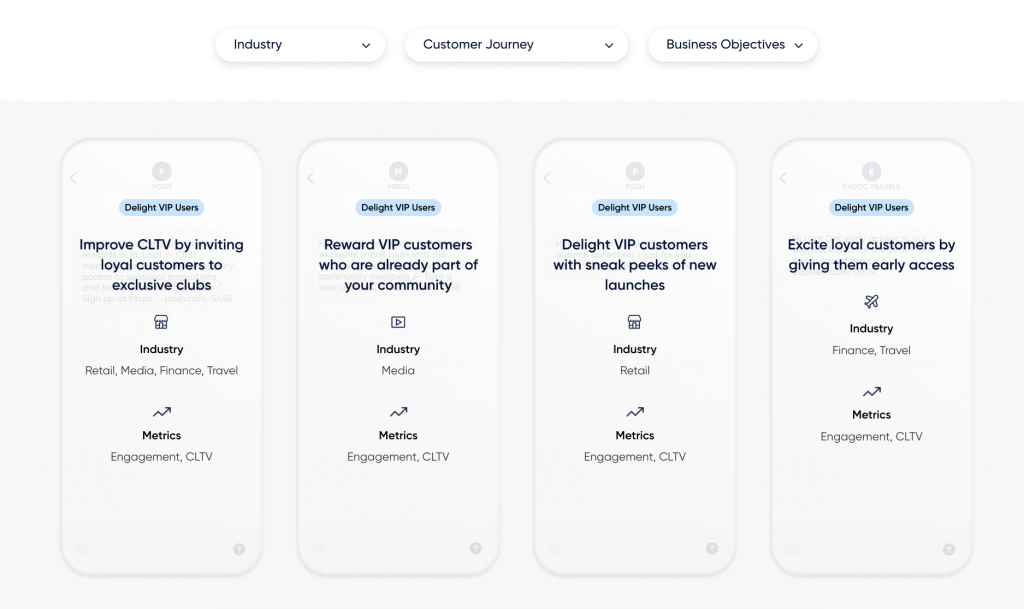
- WhatsApp, which also delivers much higher open and conversion rates compared to email. With Insider, you can take full advantage of WhatsApp’s marketing potential — from sending price drop alerts and event reminders to designing end-to-end shopping experiences. And again, you also have a plethora of proven WhatsApp templates to choose from.
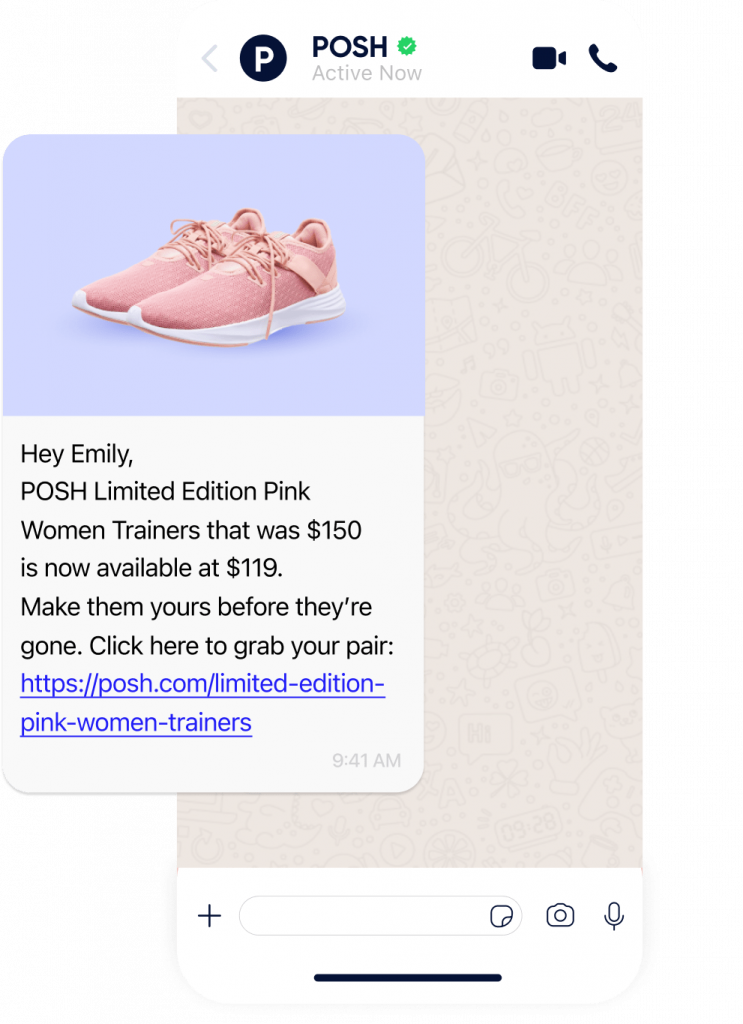
- Push notifications, which are a versatile and cost-effective way to get both anonymous visitors and known customers back to your site or app. Insider supports different types of web and mobile app pushes for different scenarios. Carrefour used our web push notifications to engage cart abandoners, leading to a 350% conversion rate uplift and an extra $11,000 of revenue in the first month.
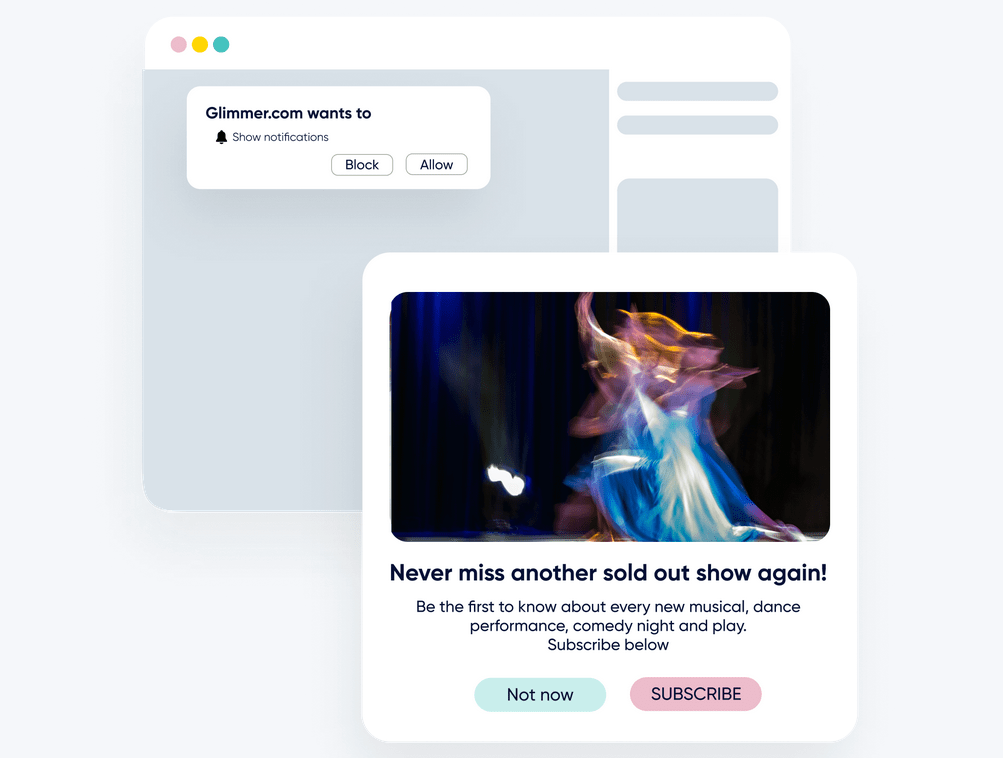
Your lifecycle campaigns across all these channels can be built, controlled, and analyzed with the customer journey builder we showed in the previous section. This helps you keep all marketing efforts coordinated, regardless of the channel or customers’ lifecycle stage.
For a real-life example, check out our case study with the fashion brand NA-KD. While they had plenty of customer data, it was fragmented across a disconnected marketing stack, which prevented them from getting a clear view of their customers and running successful lifecycle marketing campaigns.
They were able to overcome this issue by unifying their data with Insider’s enterprise CDP. From here, they were able to deliver tailored customer experiences across new and tried-and-tested channels — including their website, mobile app, email, push notifications, and SMS.
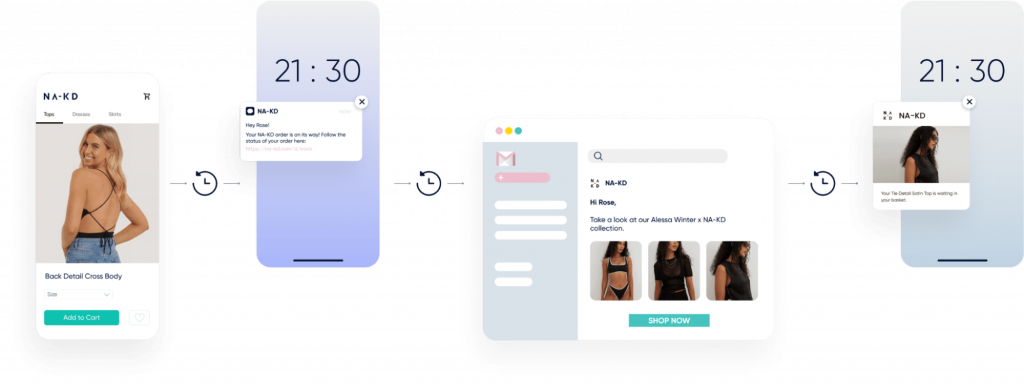
This enabled NA-KD to achieve:
- A 25% uplift in CLTV.
- A 72x ROI in 12 months of working with Insider.
Insider: Your all-in-one platform for successful lifecycle marketing
Insider is the ideal platform for midsize and enterprise brands looking to run successful lifecycle marketing campaigns.
Its industry-leading data aggregation capabilities, coupled with advanced personalization and automation tools for 12+ channels, help you make the most out of every interaction with your customers.
To recap, our enterprise marketing platform helps you improve conversion rates, revenue, AOV, LTV, and other marketing KPIs by:
- Revealing customer behaviors, interests, and preferred touchpoints.
- Aggregating your customer data into one place and connecting to all relevant data sources.
- Predicting behaviors with our AI-powered intent engine, like how much different segments are projected to spend and how likely they are to buy or engage with your messages on a specific channel.
- Delivering personalized experiences at different stages of the buyer’s journey and across all touchpoints with your brand — from your website and mobile app to channels like email, push notifications, SMS, WhatsApp, and more.
Finally, our easy channel integrations, experienced support team, and extensive template library will ensure you can implement Insider and see a meaningful ROI as quickly as possible.
Click here to book a demo with our team and learn how Insider can help you reach your business goals.

